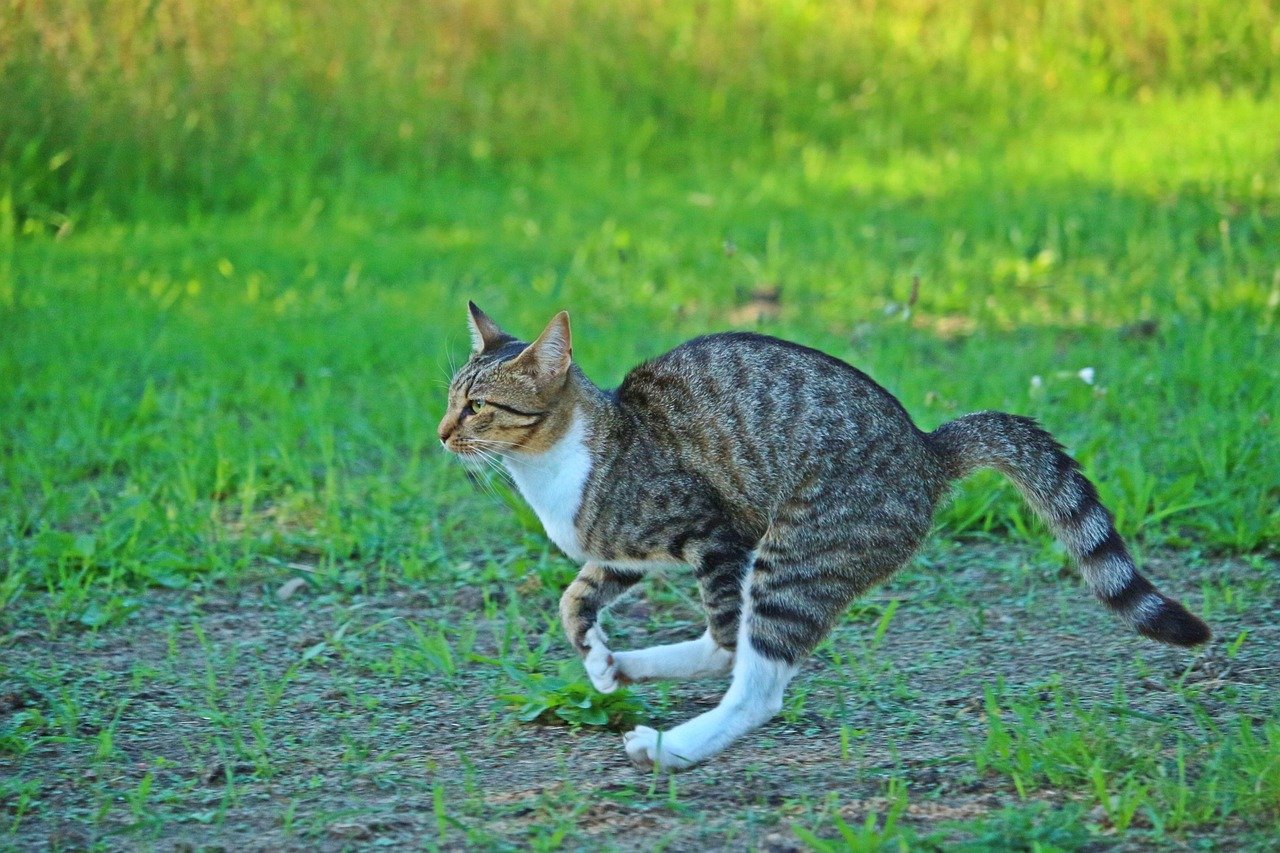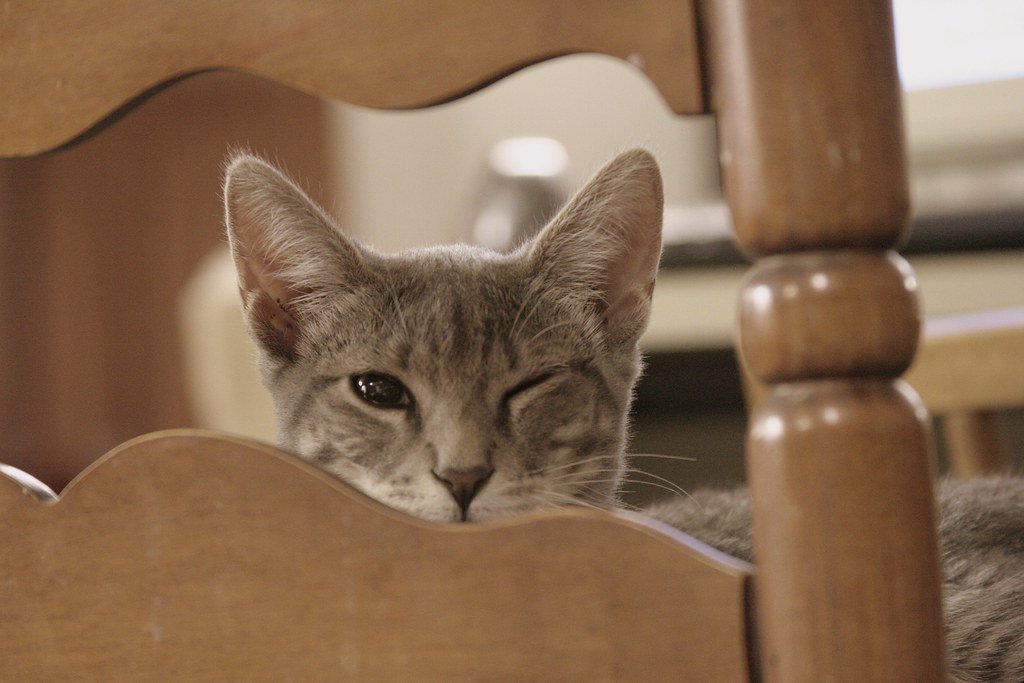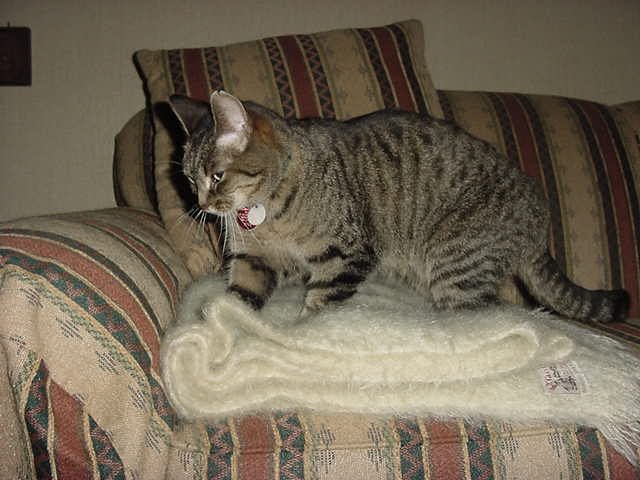Have you ever wondered why your sweet, sleepy kitty turns into a mysterious, night-prowling creature once the sun goes down? If you’ve tiptoed to the kitchen at 2 a.m. and found your cat racing around like it’s the Indy 500, you’re not alone! Nighttime cat antics can be confusing, hilarious, and sometimes a little exhausting, but every odd thing your feline friend does after dark actually has a reason. Let’s curl up together and unravel the secrets behind those moonlit meow-steries, one quirky behavior at a time.
1. Midnight Zoomies: The Wild Sprint

It feels like your cat waits until you’re half-asleep to start their wildest races. These “midnight zoomies” are bursts of energy where your cat sprints from room to room, often bouncing off furniture. While it might seem random, this behavior is actually a leftover instinct from their wild ancestors, who hunted at dusk and dawn.
Cats are crepuscular, meaning they’re most active during twilight hours. The zoomies help them release pent-up energy, keep their reflexes sharp, and stave off boredom. If your cat does this, it simply means they’re healthy, playful, and following their natural rhythm—just maybe not your sleep schedule!
2. Staring Out the Window: The Night Watch
If you catch your cat perched at the window, eyes wide and tail twitching, it’s not just daydreaming. Nighttime brings out all sorts of sights and sounds—moths fluttering, streetlights flickering, maybe even the distant yowl of a neighbor’s cat. Watching the world is your cat’s way of staying alert and mentally stimulated.
This behavior satisfies their hunting instincts and provides important environmental enrichment. It’s their version of late-night TV, helping prevent boredom and stress. Window-watching can also give you clues about what excites or triggers your cat, so you can make their indoor life more interesting.
3. Knocking Things Off: The Gravity Tester
Ever found your keys or a pen on the floor in the morning? Cats love to paw objects off tables, shelves, and nightstands, especially when you’re not there to stop them. This isn’t just mischief—it’s curiosity in action. Cats explore their world with their paws, testing how things move and fall.
At night, when the house is quiet, these little experiments are even more tempting. They might also be trying to get your attention or entertain themselves. Make sure dangerous items are out of reach, but offer safe toys and puzzles to keep their busy paws engaged.
4. Chirping and Chattering: The Hunter’s Call
That odd, birdlike noise your cat makes while watching critters through the window has a purpose. Called “chattering” or “chirping,” this sound often happens when a cat spots prey they can’t reach. It’s believed to be a mix of frustration and excitement, and may even mimic the calls of birds or rodents.
The behavior shows your cat’s strong hunting drive, even if they never set paw outside. If you notice your cat chattering, it’s a sign they’re mentally stimulated. You can help satisfy this urge by offering interactive toys that mimic the chase, like feather wands or motorized mice.
5. Scratching Furniture: Midnight Manicure
Waking up to find a new scratch on your couch isn’t fun, but your cat isn’t trying to ruin your decor. Scratching is a natural behavior that helps them shed dead claw sheaths, stretch their muscles, and mark their territory. At night, when everything is calm, cats may feel more comfortable leaving their scent and visual marks.
A scratching post in key areas can protect your furniture and let your cat do their nighttime grooming. If you notice sudden changes in scratching frequency, it can also be a clue that your cat is stressed or anxious, so always keep an eye on this tell-tale behavior.
6. Meowing and Yowling: The Late-Night Communicator
Some cats get especially vocal after dark, filling your home with plaintive meows or even loud yowls. While it can be startling, this is your cat’s way of communicating—either with you, with other animals outside, or simply expressing their feelings.
Nighttime vocalizations can signal boredom, loneliness, or even a medical issue like hyperthyroidism in older cats. If your cat’s night talking suddenly increases, it’s worth a vet check. Otherwise, try offering more playtime in the evening to tire them out and reassure them that you’re close by.
7. Pouncing on Your Feet: The Bedtime Hunt

Ever felt a furry missile attack your toes under the covers? Cats love to hunt, and your wiggling feet are just too tempting. This “bedtime ambush” mimics the way they’d stalk and pounce on prey in the wild, helping them practice their skills.
While it can be funny (or painful!), this behavior means your cat is playful and healthy. If it’s keeping you awake, try a vigorous play session before bed to satisfy their hunting urge, and use thick blankets to protect your toes from surprise attacks.
8. Licking and Grooming: The Quiet Ritual
If you hear soft, repetitive licking in the dark, your cat is probably giving themselves a mini spa session. Nighttime grooming helps keep their fur clean, regulate body temperature, and strengthen their scent, which is comforting to them.
Excessive nighttime grooming can sometimes signal stress, allergies, or parasites. But for most cats, it’s a calming ritual that helps them wind down. You can support this by keeping their environment calm and providing cozy, clean sleeping spots.
9. Cuddling or Kneading: Seeking Comfort

Some cats sneak into bed and start kneading your blanket (or you!) with their paws, purring or snuggling. This adorable behavior, rooted in kittenhood when nursing from their mother, is a sign your cat feels safe and content.
Kneading and cuddling can also help them mark you with their scent, reinforcing their bond with you. If your cat chooses your bed for their nighttime nap, take it as a compliment—they trust you completely. Just make sure to trim their nails regularly if the kneading gets a bit too “loving.”
10. Inspecting Every Corner: The Nighttime Patrol
When the lights go out, your cat may become a silent shadow, prowling from room to room. This is their instinctual patrol—checking for changes, sniffing out intruders, and making sure their territory is safe. It’s how they reassure themselves that all is well.
You might spot your cat quietly investigating closets, sniffing under doors, or peeking behind furniture. This nightly routine is healthy and important for their mental well-being. Encourage it by providing safe spaces and rotating toys to keep their environment interesting.
Jen is a passionate nature lover and ocean conservationist. She has dedicated her life to protecting the environment and preserving the beauty of the natural world. Growing up in a small coastal town, Jen sincerely appreciated the ocean and its inhabitants. She has spent countless hours exploring the shoreline, learning about the creatures that inhabit the waters, and advocating for their protection. Jen is an active member of ocean conservation organizations, and she is committed to educating the public about the importance of conserving wildlife and the natural environment.





